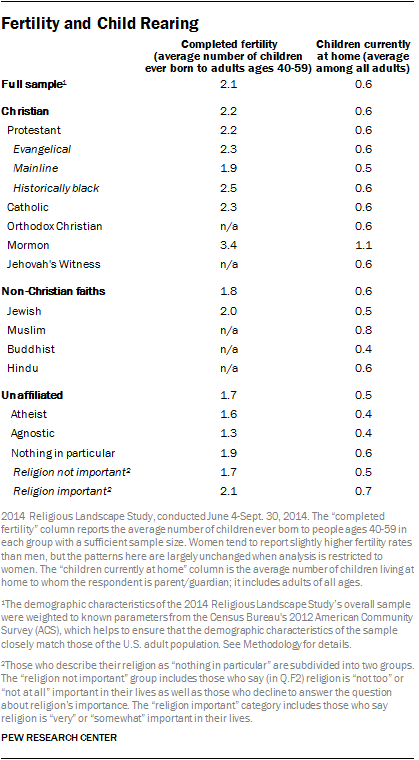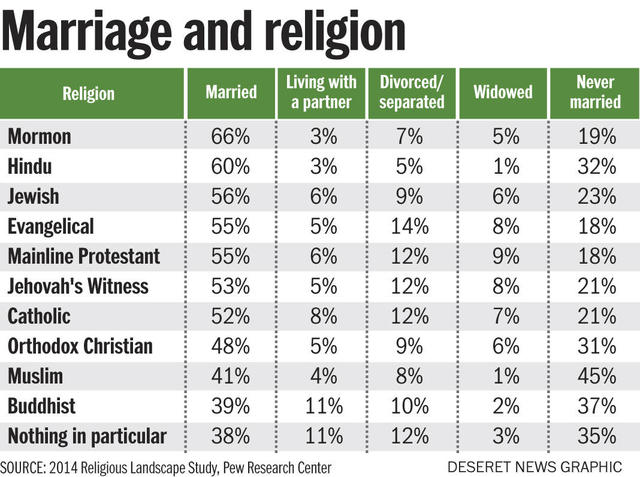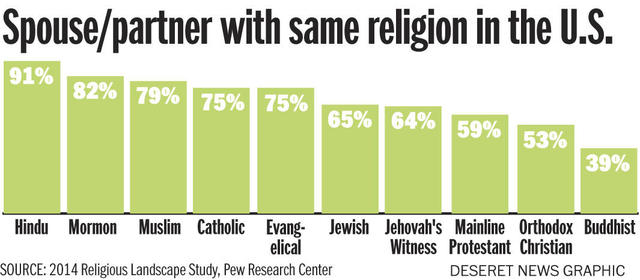The Pew study on religion is a massive undertaking. Pew interviewed 35,000 adults on religious habits in English and Spanish. The study is not perfect, but it seems to be widely recognized as the best, most comprehensive study out there on the religious practices of Americans.
For Mormons, there is some good news but also plenty of worrisome news.
First, the good news. Mormons still have big families.
Mormons have significantly more kids than any other religious group. This of course is good news for the future. Kids born Mormons are more likely to stay in the Church.
Mormons are also more likely to be married and divorce is relatively rare.
Mormons are also very likely to marry other Mormons (temple marriages are a good thing and partners who share a religion are more likely to stay married).
Meanwhile, the percentage of total people in the United States who are Mormon was pretty stable from 2007 to 2014. IN 2007 it was 1.7 percent, and in 2014 it was 1.6 percent.
The big news from the survey was the precipitous drop in the Christian population in the U.S.
As this story notes:
The biggest change is the sharp drop in Americans who identify as Christian, from 78.4 percent in 2007 to 70.6 percent last year. Christianity’s downsizing “is big, it’s broad, and it’s everywhere,” said Alan Cooperman, Pew’s director of religion research. “The decline is taking place in every region of the country, including the Bible Belt.”
The sharpest declines are among mainline Protestants (14.7 percent, from 18.1 percent in 2007) and Roman Catholics (20.8 percent, from 23.9 percent), with a much smaller drop in evangelical Protestants (25.4 percent, from 26.3 percent).
Where are those Christians going? To the “nones,” mostly — embracing atheism, agnosticism, vague spirituality, and indifference. The number of atheists (3.1 percent) and agnostics (4 percent) doubled, and there are more total “nones” (22.8 percent) than Catholics, or than United Methodists, Presbyterians, and Evangelical Lutherans combined. The number of non-Christian religious also grew slightly, to 5.9 percent from 4.7 percent, with most of the growth among Hindus and Muslims.
The aversion of younger people to organized Christianity is a big factor, but people in all demographics are leaving the churches.
It is worth noting that the membership numbers of the more conservative dominations are pretty stable. It is the liberal “mainline” Protestant churches and the Catholic church that are losing members.
This article has many things to ponder about the total Christian population. Give it a read. To sum up: evangelicals are doing OK, mainline Christian groups are in decline, and the Catholic church is also in decline. The number of people with no religion is way up.


